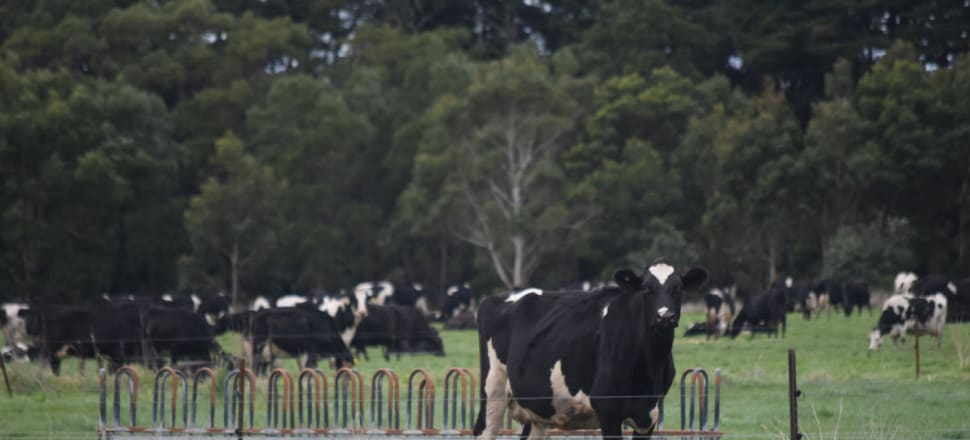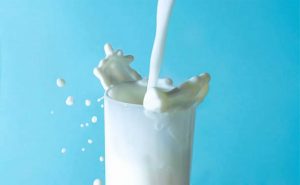The couple and their two children Eamon, 10, and Audrey, 5, moved onto the 232 ha farm that splits the difference between Camperdown and Cobden.
It’s a prime dairying area but the farm presented some challenges, leading Jim to head a significant overhaul during the past 12 months.
His focus has been on improving laneways, paddock layout, water supply and building a new vat with the ultimate aim of making it easier to manage and more profitable.
They are milking 440 cows, mostly Friesian but with some crossbreeds, and believe they will be well placed to capitalise on a strong dairy industry when the improvements are finished in the next year or two.
About half the herd came with the farm, the others from the Sloane’s former farm at Cobrico.
A relatively new 50-unit rotary dairy has been a significant boon while they put their mark on the farm.
“Having a good dairy was a saving grace,” Felicity said.
“We were able to put milk straight into the vat while we fund the other improvements.”
“When you take on a new enterprise, you expect to have extra work at the start,” Jim said.
“Every farm has its challenges; this one has thrown out a few more than the average, but we want to do it right so you only have to do it once. We’re happy with the progress.”
The first priority was expanding laneways and rearranging paddocks to improve cow flow and pasture growth.
Water supplies have been improved and they are now relocating the vat.
Demolition of former sheds and dairies that hadn’t been removed when superseded is next on the agenda.
“You need to be running efficiently so you need wide laneways,” Jim said.
“You could barely get a tractor down some of them. We’ve removed several kilometres of unneeded lanes and now they’re about eight metres wide and it’s much easier for the cows.”
The previous laneways had multiple bends; the new design is much more direct.
“I came up with a plan over a few months, and called in consultant Sam Baulch to help with the final design,” Jim said.
“It’s all about ease of management and making it a simpler operation to run.”
About two-thirds of the farm has a new layout and the remaining section will be redesigned next summer.
The new vat will also boost efficiencies. The vat was never moved when the previous owner built new dairies.
“It’s basically down the back of the farm and for ease of management we need it closer to where we milk,” Jim said.
The site is marked ready for construction and the vat will be larger and more efficient; going from 14,000 to 18,000 litre capacity.
Although it’s too early to gauge how the changes are improving production, especially with water supply issues resulting in lost production over summer, Jim and Felicity are happy with the progress and confident about the future.
“We’re doing it all now so we can reap the rewards in the long-term,” he said.
“It’s going to improve.”
Jim is a self-confessed pasture farmer, admitting that watching grass grow is his prime joy from farming.
“Because they were so rundown, it’s going to take three or four years to get them where we want.
“This season I’m using annuals and bi-annuals and once we get the weed and barley grass under control, we’ll look at the better class of perennials.”
Investing in a new farm reflects their confidence in the dairy industry, and the region.
“When we were buying there wasn’t a great selection out there,” Jim said.
“We didn’t want to move too far south or north; this is where we wanted to be.”
It is on good, flat land with a mostly reliable rainfall, with Camperdown 7 km in one direction and Cobden 7 km the other way.
The picturesque Camperdown-Timboon Rail Trail goes through the farm.
Local contractors have been used to do the farm upgrades, and the Fonterra suppliers have developed good relationships with their field services officer and bank manager.
Jim and Felicity know that it’s not a bed of roses, but they don’t share the more negative views of some in the industry.
“I can’t see a problem with it,” Jim said.
“People are always going to drink milk. It will have its ups and downs but it’s going to have a good future.
“The last three seasons we couldn’t have asked for better weather conditions and we can’t complain about the price.
“There’s way too much negativity in the industry.”
Felicity points to the contribution of dairy to the region’s success.
“If you look at the history of dairying in this region, it has been pretty good. These towns have been built around dairying.”













